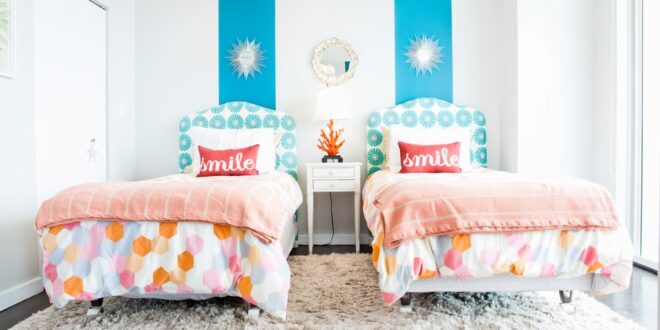If you’re trying to choose between bunk beds and traditional kids’ beds, there are several factors to consider before making your decision.
You’ll want to take into account your budget, the amount of room you have available in your home, and your child’s personal preferences when choosing between these two types of beds.
For instance, bunk beds are typically less expensive than traditional kid’s beds, which may be important if you have other large expenses coming up in the near future.
Know Your Child’s Needs
Before you can decide if a bunk bed or traditional bed is best for your child, you need to know what your child needs in a bed. If your child is still young, they may need a bed with rails to prevent them from falling out.
If your child has allergies, you’ll want to make sure the bed doesn’t have any materials that could trigger their allergies. You should also consider the size of your child’s bedroom and if there’s enough space for a bunk bed.
If you have more than one child, you may want to get a bunk bed so they can share a room. Lastly, you need to think about your budget and what type of bed fits into that budget.
Consider Safety Features
When it comes to choosing a bed for your child, safety should be your number one priority. Bunk beds are great because they have guardrails on the top bunk to prevent your child from falling out.
Traditional beds also have guardrails, but they’re not as high as bunk beds, so there’s a greater risk of your child falling out. Another safety consideration is whether the bed has stairs or a ladder.
Bunk beds typically have stairs, which can be dangerous if your child falls while climbing up or down them. Traditional beds don’t usually have stairs, but some have ladders, which can also be dangerous if your child falls while climbing up or down them.
Look at Space Requirements
How much space does your child’s bedroom have? This is an important consideration when deciding between bunk beds and a traditional kids’ bed. If your child’s bedroom is on the smaller side, a bunk bed might not be the best option as it will take up a lot of valuable floor space.
On the other hand, if your child has a large bedroom, a bunk bed can be a great way to make use of the extra space and create a fun, unique sleeping area for your child.
Think About Potential Expansion Options
As your children grow, so does their need for space. If you’re considering a bunk bed for your child’s bedroom, think about how it will affect the room’s layout and whether or not it can be reconfigured as your child gets older. The same goes for traditional kid’s beds; if you anticipate needing to add on to the bed (with a trundle or storage drawers, for example), make sure the bed can accommodate those additions. By thinking ahead now, you can save yourself time and money down the road.
Visit Showrooms to See Different Types of Beds in Person
It can be tough to decide on the perfect bed for your child without seeing it in person first. That’s why it’s important to visit different showrooms and get a feel for the different types of beds available.
You’ll be able to see how big or small each bed is, what type of mattress it comes with, and how much storage space it has. This will help you narrow down your options and choose the best bed for your child.
Ask Around For Recommendations From Family, Friends, and Neighbours
When it comes to choosing the best bed for your child, there are a few different options to consider. One option is a bunk bed, which can be great for siblings who share a room or for sleepovers.
Another option is a WNM-Group – Best kids bed, which can come in various shapes and sizes. If you’re not sure which type of bed is best for your child, ask around for recommendations from family, friends, and neighbors.
You can also read online reviews to get a better idea of what other parents are saying about different types of beds at OurYourHome.
 Make Home Smart Let's Make Smart Home for Everyone!
Make Home Smart Let's Make Smart Home for Everyone!




